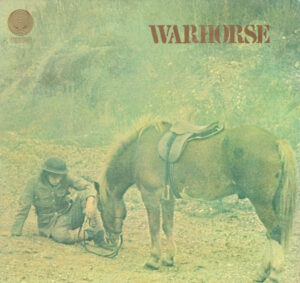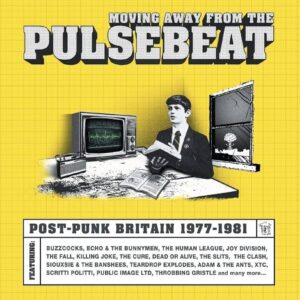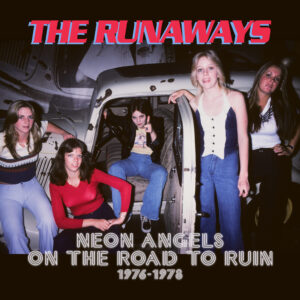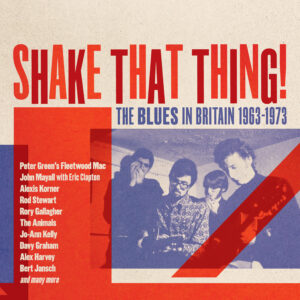 The world isn’t short of great psych and prog themed anthologies. The fact is, if you’re a keen psych/freakbeat/early prog fan, you’ve probably got those Cherry Red sets bringing together a wealth of stuff from between 1967-69, the many ‘Rubble’ releases, and more besides. Why should you add another psych oriented release to your already solid collection of compilations? Simply that ‘Psych!: British Prog, Rock, Folk & Blues 1966-73’ brings together a wealth of great music in less of a scattershot manner. Its three disc, sixty four track selection celebrates the more “out there” releases from Decca Records and their Deram off-shoot, and in doing so, plays more like a journey through an ever changing landscape from a more focused perspective, showing how the label often found themselves at the forefront of one of history’s most exciting periods in music.
The world isn’t short of great psych and prog themed anthologies. The fact is, if you’re a keen psych/freakbeat/early prog fan, you’ve probably got those Cherry Red sets bringing together a wealth of stuff from between 1967-69, the many ‘Rubble’ releases, and more besides. Why should you add another psych oriented release to your already solid collection of compilations? Simply that ‘Psych!: British Prog, Rock, Folk & Blues 1966-73’ brings together a wealth of great music in less of a scattershot manner. Its three disc, sixty four track selection celebrates the more “out there” releases from Decca Records and their Deram off-shoot, and in doing so, plays more like a journey through an ever changing landscape from a more focused perspective, showing how the label often found themselves at the forefront of one of history’s most exciting periods in music.
Tag Archives: 70s
WARHORSE – Warhorse
 Between 1967 and 1969, the original Deep Purple released a trio of excellent albums. Those records mixed elements of 60s pop with rock guitar, experimented with psychedelia, and even explored avenues of orchestral rock. The huge proto-metal work of the band’s next incarnation – makers of the classics ‘Black Night’, ‘Smoke On The Water’ and ‘Highway Star’ – has long overshadowed the earlier Purple outings, but tracks like ‘Shield’ and ‘Chasing Shadows’ provided a massive showcase for Ritchie Blackmore’s distinctive guitar work and things to come, whilst the epic ‘April’ proved this was a band with bigger ideas than most, and their ability for making other peoples’ material their own was almost as impressive.
Between 1967 and 1969, the original Deep Purple released a trio of excellent albums. Those records mixed elements of 60s pop with rock guitar, experimented with psychedelia, and even explored avenues of orchestral rock. The huge proto-metal work of the band’s next incarnation – makers of the classics ‘Black Night’, ‘Smoke On The Water’ and ‘Highway Star’ – has long overshadowed the earlier Purple outings, but tracks like ‘Shield’ and ‘Chasing Shadows’ provided a massive showcase for Ritchie Blackmore’s distinctive guitar work and things to come, whilst the epic ‘April’ proved this was a band with bigger ideas than most, and their ability for making other peoples’ material their own was almost as impressive.
VARIOUS ARTISTS – Moving Away From The Pulsebeat: Post Punk Britain 1977-1981
 When punk shook Britain’s music scene in ‘76, it came as a revelation. The DIY spirit of the Buzzcocks’ ‘Spiral Scratch’ EP suggested that anyone could be in a band; you didn’t need to have to have years worth of musical training. Music could also be about capturing an energy and a spirit. Punk’s first wave was relatively short-lived. By 1978, guitar driven bands were mixing the less flashy elements of punk with bigger melodies, resulting in the mod influenced sounds of The Jam and the broader power pop of Elvis Costello & The Attractions. Some were even taking punk’s pure drive and creating what would now be considered goth, and bands like Ultravox! and Wire – arguably the greatest bands to be tagged with the term “post punk” – added strange and angular artiness, shaping the sounds of a generation.
When punk shook Britain’s music scene in ‘76, it came as a revelation. The DIY spirit of the Buzzcocks’ ‘Spiral Scratch’ EP suggested that anyone could be in a band; you didn’t need to have to have years worth of musical training. Music could also be about capturing an energy and a spirit. Punk’s first wave was relatively short-lived. By 1978, guitar driven bands were mixing the less flashy elements of punk with bigger melodies, resulting in the mod influenced sounds of The Jam and the broader power pop of Elvis Costello & The Attractions. Some were even taking punk’s pure drive and creating what would now be considered goth, and bands like Ultravox! and Wire – arguably the greatest bands to be tagged with the term “post punk” – added strange and angular artiness, shaping the sounds of a generation.
THE RUNAWAYS – Neon Angels On The Road To Ruin 1976-1978
 In the early 1970s, the rock world was dominated by men. Some of them wore androgynous outfits and lipstick, but guitar driven music was largely a male scene. There were exceptions, of course: Suzi Quatro – a musician for whom the idea of gender was less rigid – had hits on both sides of the Atlantic; the Wilson sisters scored great success with Heart; Fanny pioneered the “all female band”, and the rarely mentioned Birtha weren’t far behind.
In the early 1970s, the rock world was dominated by men. Some of them wore androgynous outfits and lipstick, but guitar driven music was largely a male scene. There were exceptions, of course: Suzi Quatro – a musician for whom the idea of gender was less rigid – had hits on both sides of the Atlantic; the Wilson sisters scored great success with Heart; Fanny pioneered the “all female band”, and the rarely mentioned Birtha weren’t far behind.
The arrival of The Runaways in the mid 70s came like a lightning bolt. Here were five teenage girls, ready to make a huge noise and ready to flaunt a bucket’s worth of sexuality. Ostensibly a package deal put together by Kim Fowley, The Runaways weren’t just a girl band; they could really rock, and by straddling a sound somewhere between trashy hard rock and proto-punk, their brand of noise really struck a chord with the era. They were pioneers. Without them, there would be no Donnas, and possibly no Babes In Toyland or L7.
VARIOUS ARTISTS – Shake That Thing: The Blues In Britain 1963-1973
 The British blues boom was arguably one of the most important movements in musical history. Not only did it launch the careers of various guitar heroes – players much loved for decades afterwards – but the guitar driven sounds also paved the way for a whole universe of rock music. With that in mind, it’s interesting how few compilations have celebrated the British blues scene. Aside from Grapefruit Records’ excellent ‘Crawling Up A Hill’ box set, any other releases have been label specific, leaving a huge gap in the market for a set to explore some of the more niche sounds from the era.
The British blues boom was arguably one of the most important movements in musical history. Not only did it launch the careers of various guitar heroes – players much loved for decades afterwards – but the guitar driven sounds also paved the way for a whole universe of rock music. With that in mind, it’s interesting how few compilations have celebrated the British blues scene. Aside from Grapefruit Records’ excellent ‘Crawling Up A Hill’ box set, any other releases have been label specific, leaving a huge gap in the market for a set to explore some of the more niche sounds from the era.
‘Shake That Thing: The Blues In Britain 1963-1973’ is perfect in that regard. This three CD set from Grapefruit casts a much wider net than their earlier box set, but never loses site of its core objective. Bluesy sounds are out there, front and centre, at all times, but it also looks beyond the usual suspects to celebrate blues laden tunes shared by other singer songwriters, folkies and rock bands during a hugely transitional period.
